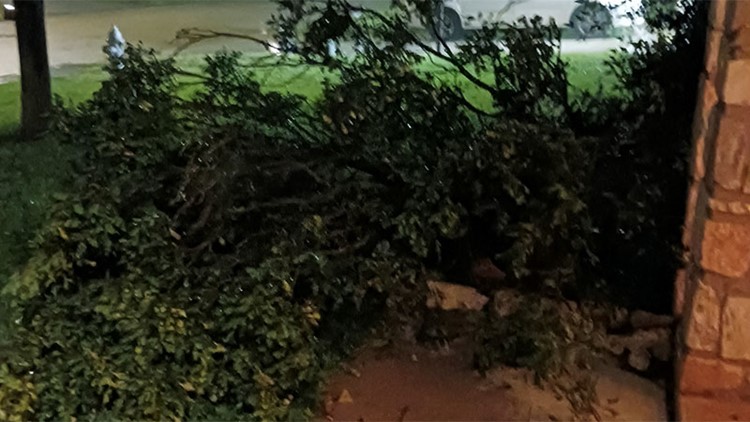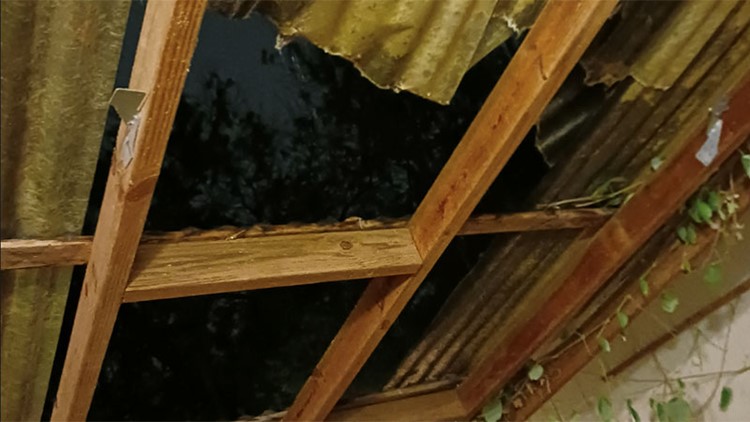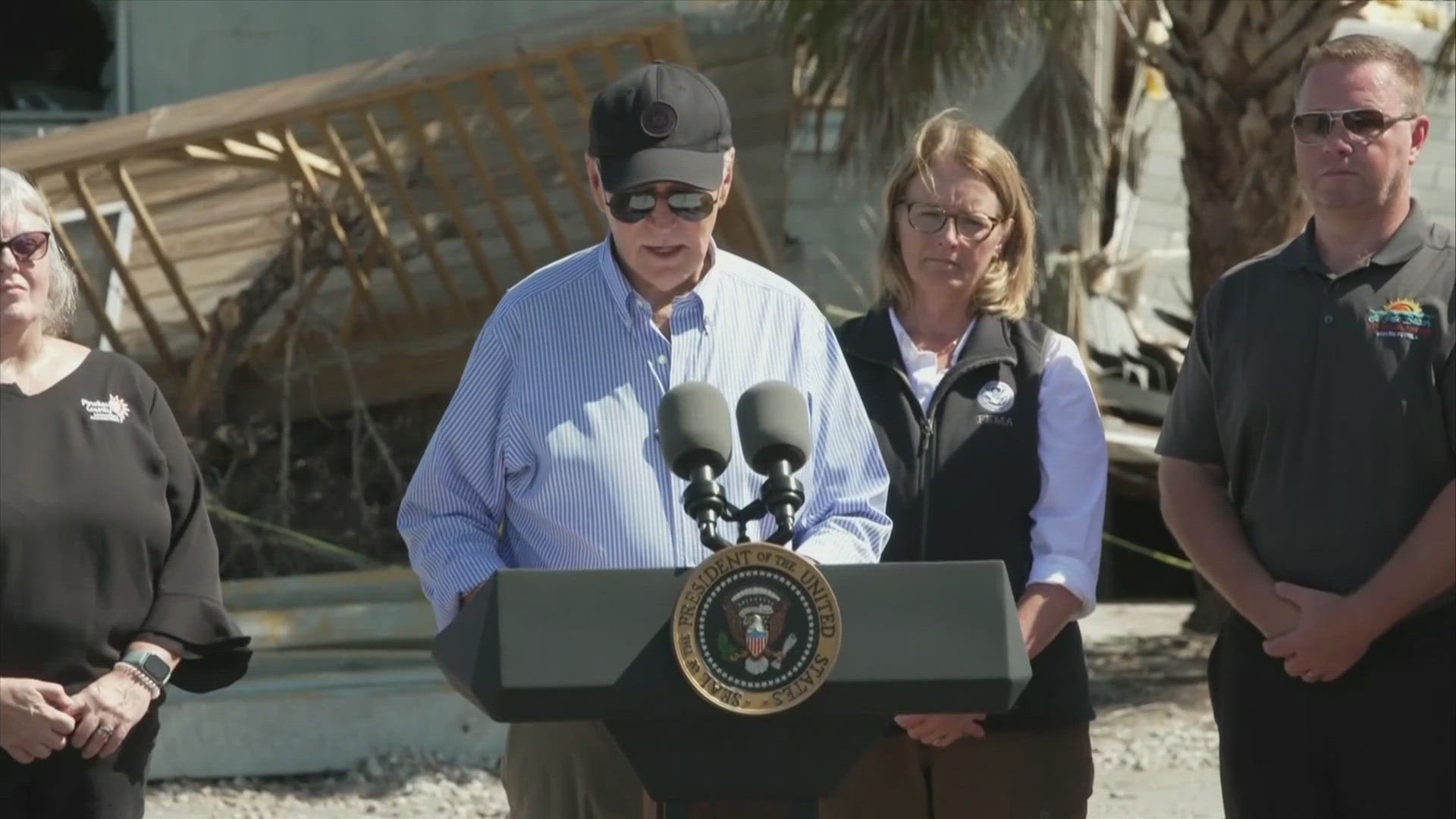SAN ANTONIO — It was mostly dry from sunrise on in San Antonio on Saturday, after worries that the overnight flood threat might last deeper into Mother's Day weekend.
Instead, CPS Energy crews continued to restore power from storms that pushed through San Antonio in the early hours of Saturday morning, bringing thunder and downpours to the Alamo City. Another threat of excessive rain during the day on Saturday did not end up materializing, and only a few pop-up showers are expected on Mother's Day.
Nearly 15,000 CPS Energy customers were without power at one point early Saturday morning, but that number dwindled as the day went on. And all but five major Bexar County roads had reopened by Saturday night following concerns of high-water dangers. At least two occupants were rescued from a submerged car in Kirby.
By 1:30 a.m. Saturday, downpours were drenching central San Antonio and cracks of loud lightning could be heard. Shortly before 2 a.m., the Bexar County Sheriff's Office posted a Facebook alert encouraging residents to "limit unnecessary travel."
PHOTOS: Heavy rainfall, thunderstorms bring flooding conditions to San Antonio
Weekend forecast
Widespread showers and thunderstorms were expected to continue through early Saturday morning over areas to the east of Interstate 35. Heavy rainfall and flooding potential will continue for those areas. Flood Advisories are in effect over many areas of the I-35 corridor and the Coastal Plains. Flash Flood Warnings may become necessary.
Additional periods of showers and thunderstorms are possible from Saturday afternoon through Monday, but the National Weather Service says it is difficult to determine where precisely they will occur, in addition to how many rounds may occur.
A Flood Watch remains in effect through at least 8 p.m. Saturday, but the watch could be extended depending on storm development.
The National Weather Service forecast of storm totals ranging from 3 to 6 inches through Monday remains on track. Isolated totals of 10 inches or greater remain possible, particularly over portions of the Rio Grande that were hit hard Friday night.
River levels are expected to continue to rise, some into moderate to major flood categories.
This is a developing weather event. Refresh the page for the latest updates.
SEVERE WEATHER 101
When severe weather threatens the area, it is important to know what risks a storm can bring and what you should do to stay safe.
One of the most important things to know is where you are located on a map, so when a watch or warning is put into place, you can identify if you are at risk. When the National Weather Service puts out warnings, they are county-based and sometimes include cities as well. It is important to know where you live in the county and that you can identify it on a map.
It is also important to know the difference between a watch and a warning. A watch means that conditions are favorable for something to happen, but a warning means that something has developed and it is important to take action.
So, what would cause a thunderstorm to be qualified as a "severe" thunderstorm?
Hail that is one inch large is also considered to be about the size of a quarter.
Another ingredient that would lead to a storm becoming severe is if winds are 58 mph or greater.
Winds at this strength could cause damage to roofs and could even cause trees to be knocked down.
Finally, if a tornado is present inside a thunderstorm it would qualify the storm as becoming severe.
In this instance, a tornado warning would be issued.
A tornado watch can be issued for an area if strong storms are expected, and if the storms bring the risk for tornadoes, but not all storms include the threat for tornadoes. The ingredients in the atmosphere for a tornado to form are not always there when storms are present.
If the area you are in is ever under a tornado warning, it is important to know where you should go inside your home.
Head to the lowest, interior room of your home. The basement would be best, but if you don't have one, head to the first floor of the home and get away from exterior walls, or walls that lead to the outside of the home.
It is also important to stay away from glass. The more walls you can put between you and the outside, the better.
While lightning can be frequent in storms and very dangerous, it does not lead to a storm being qualified as severe.
Remember, when thunder roars, go indoors.
Storms can also lead to flooding. Flooding may not cause a storm to be labeled as being severe, but it is the deadliest kind of weather.
South Texas is known to have major flood events every few years, so it is important to use caution and to always stay out of floodwaters. Remember, turn around, don't drown.
Entering flood water is very dangerous as you can be swept off of your feet and you don't know what could be in the water that could hurt you.
The best thing you can do to be ready for severe weather is know what you will do in the event it strikes where you live.
Make sure your family has a severe weather action plan.
Have a place everyone goes inside your home and keep supplies there, such as food, medication, batteries, and flashlights.
Weather Minds Classroom: Take a class in Severe Weather 101
Follow the KENS 5 Weather Team
Don't forget you can download the KENS 5 app for the latest news and weather information each day while you are on the go.









